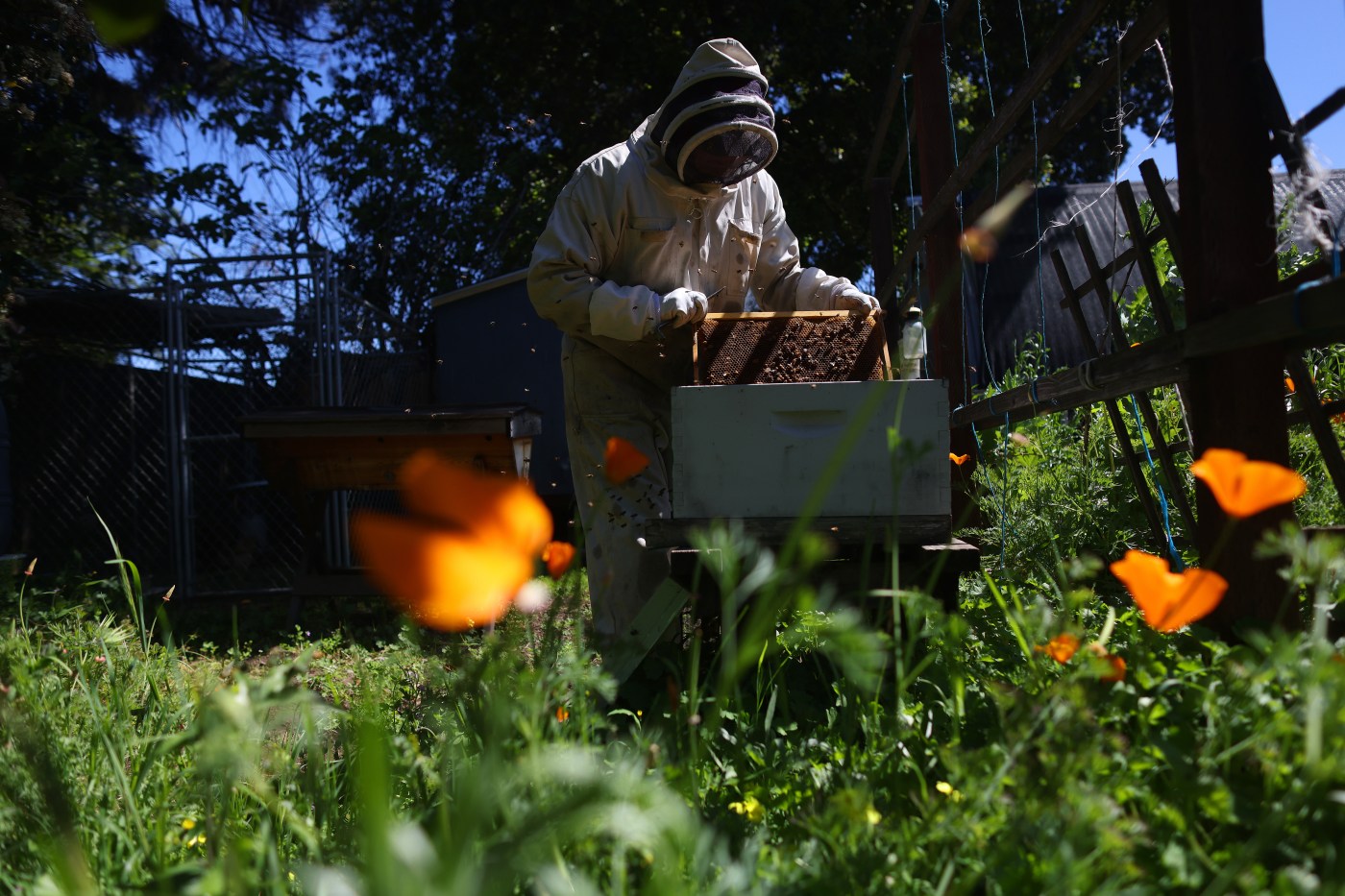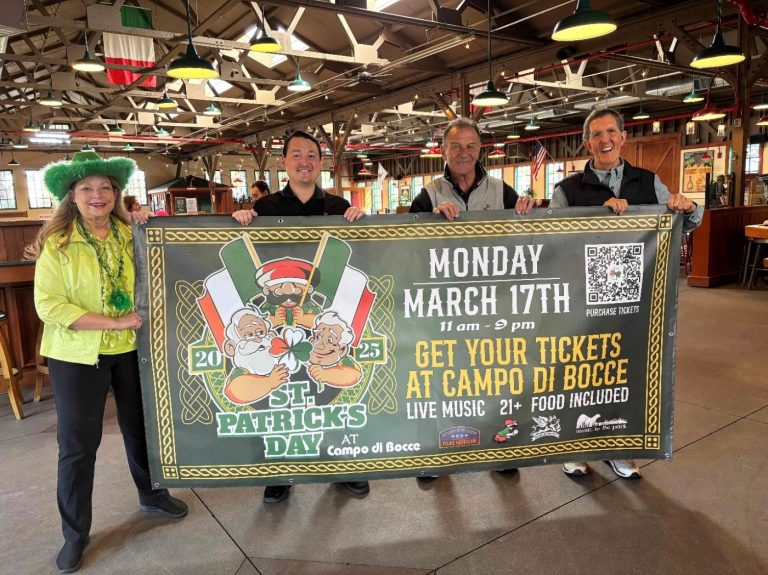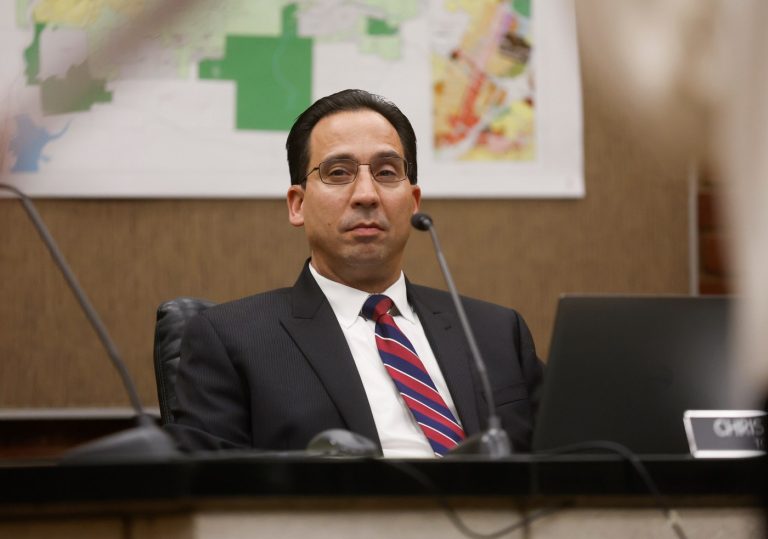During the spring, honeybees are just about everywhere in the South Bay, and so is beekeeper Jack Carter.
Armed with a cellphone with a honeycomb-patterned case and a garage full of beekeeping equipment, the Cupertino resident is always ready to respond to calls from locals to remove swarms or monitor the health of their backyard hives.
The 73-year-old, who has been pursuing the profession as a hobby for more than a decade, likes to use these opportunities to encourage people to learn about bees and support hive growth.
“Beekeepers are like drug pushers,” Carter said. “We want to get everybody addicted.”
With the largest beekeeping industry of any state, California has nearly 500,000 colonies operated by 400 commercial and semi-commercial beekeepers, and an additional 2,000 hobby beekeepers have one or more bee hives. Honeybees are an integral part of the U.S agriculture industry, pollinating $15 billion worth of crops each year, including more than 130 types of fruits, nuts and vegetables, according to the U.S Department of Agriculture.
Colonies have been through some tough times lately. Parasites, pesticides and extreme weather conditions have all contributed to bee population decline. U.S beekeepers lost an estimated 48% of their honey bee colonies in 2022-23, the second highest death rate on record after losing 51% in 2020-2021, according to a national study on bee decline.
As a member of the Santa Clara Valley Beekeepers Guild, a county-based organization that promotes local beekeeping and advocates for the well-being of bees, Carter offers free swarm rescue services in Cupertino, Los Altos, Los Altos Hills, Saratoga, Sunnyvale and West San Jose. He’ll buzz about bees to those who stop by his home-made honey stand, Third Acre Farm, and preach to passersby who crowd around as he moves a swarm into a hive box, mesmerized by the bees’ behavior.
“When you’ve got the queen in the box, then the bees start going in, like little soldiers in a column,” he said. “And everyone think’s that you’re God.”
After trapping a swarm, he keeps the bees in the box and delivers it to anyone who wants to keep a hive in their backyard. He owns seven at his house, but monitors 21 others across 10 different houses. He visits each hive in-person, taking careful notes about which ones have steady honey production and healthy bee behavior, and which ones he needs to modify.
To help fund his hobby, Carter collects honey from the hives and sells them in jars outside his Vai Avenue home west of Highway 85. Unlike most stands, Third Acre is self-service, where locals drop money into the box before taking an amber-colored jar. A 3 ounce jar costs about $6 and a pound goes for $20. At the bottom of each is a sticker letting people know which hive produced the honey.
“It puts a smile on my neighbors’ faces,” he said. “People enjoy the fact that there is a little honey stand that is self-service and very local and very raw.”
Tending to the hives, especially in the spring when their activity is the highest, can be tiresome, and a decade of physical labor is catching up to Carter. Still, he does it for the bees, and to make people happy.
“I do get to the point where I’m ready to give up,” he said. “Then somebody says, ‘Jack, I so appreciate what you’re doing for the bees and for the pollination.’”
Related Articles
Pandemic baking, gardening lead to tea business for East Bay mom
Gilroy begins construction on pedestrian-only public plaza
Saratoga City Council authorizes Chamber of Commerce budget increase
Campbell leaders drop bombshell on business owner
How a tech company’s perks help Bay Area businesses, build social connections
Sharon Eilts is one of those appreciative locals. An avid gardener, Eilts asked Carter to install a beehive in her backyard last year. Her garden is now buzzing with activity as the bees jump from flower to flower.
“I’m in awe of him, because it’s a lot of work,” the Cupertino resident said. “You’ve got to make sure the hives are clean, that the bee population doesn’t have diseases. He comes by to make sure they are creating enough honey.”
Carter recently bestowed a quart of his honey to Eilts and her husband. The couple are working their way through it, one teaspoon of goodness at a time.
“It’s so much better than what you buy in the store, which is some funky colored corn syrup,” she said. “You can’t understand how good honey is unless you get it from a beekeeper.”












